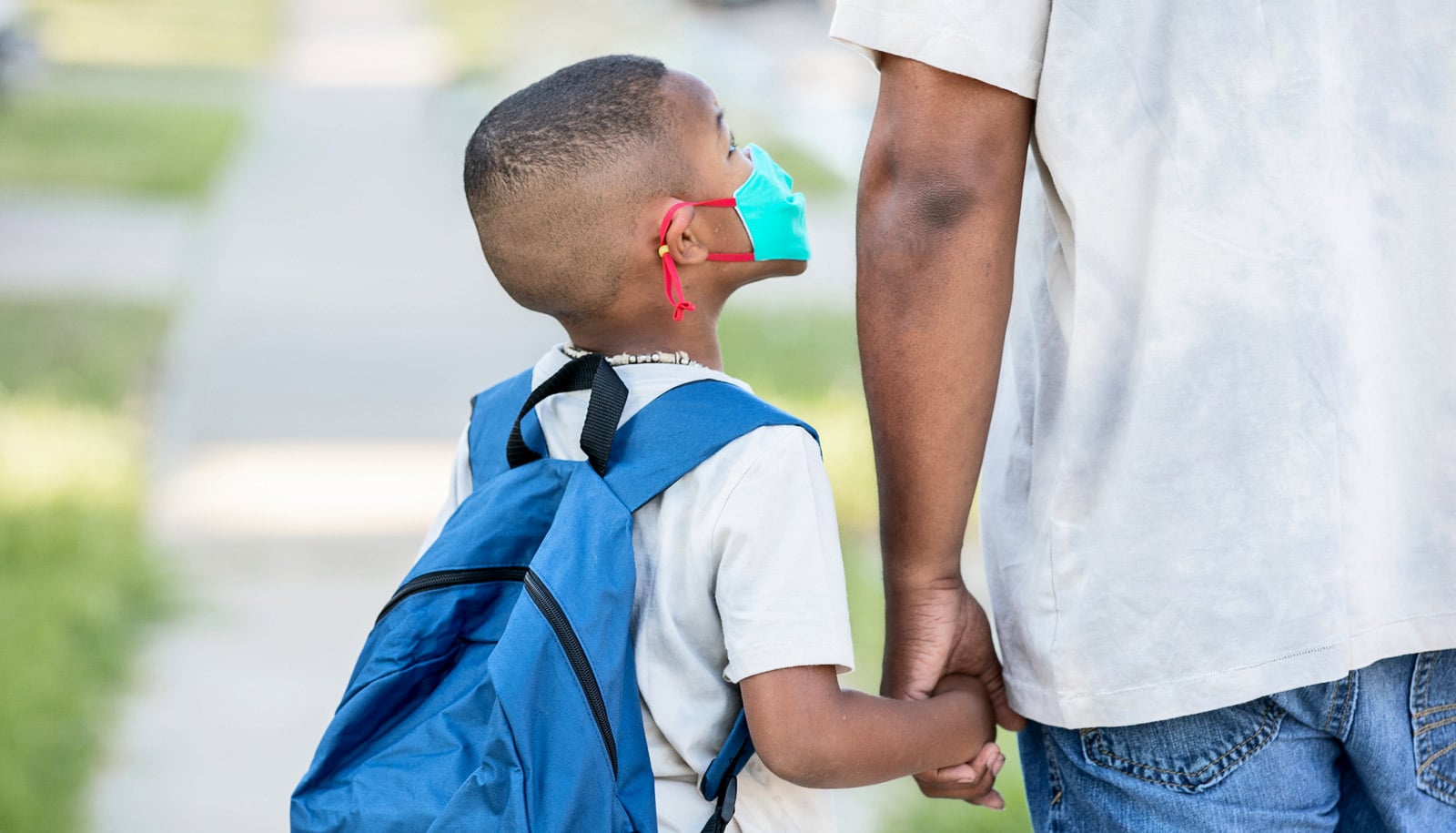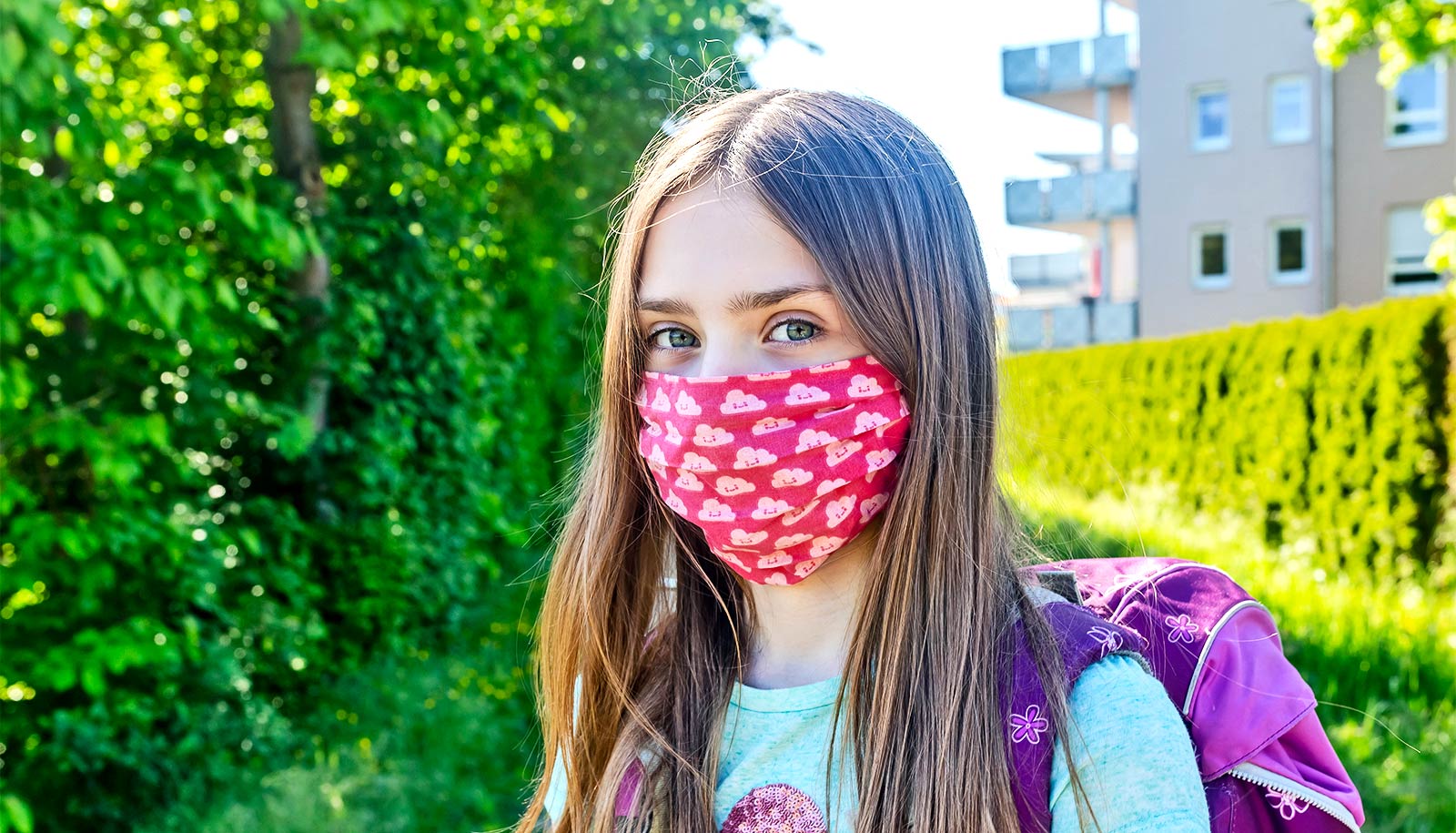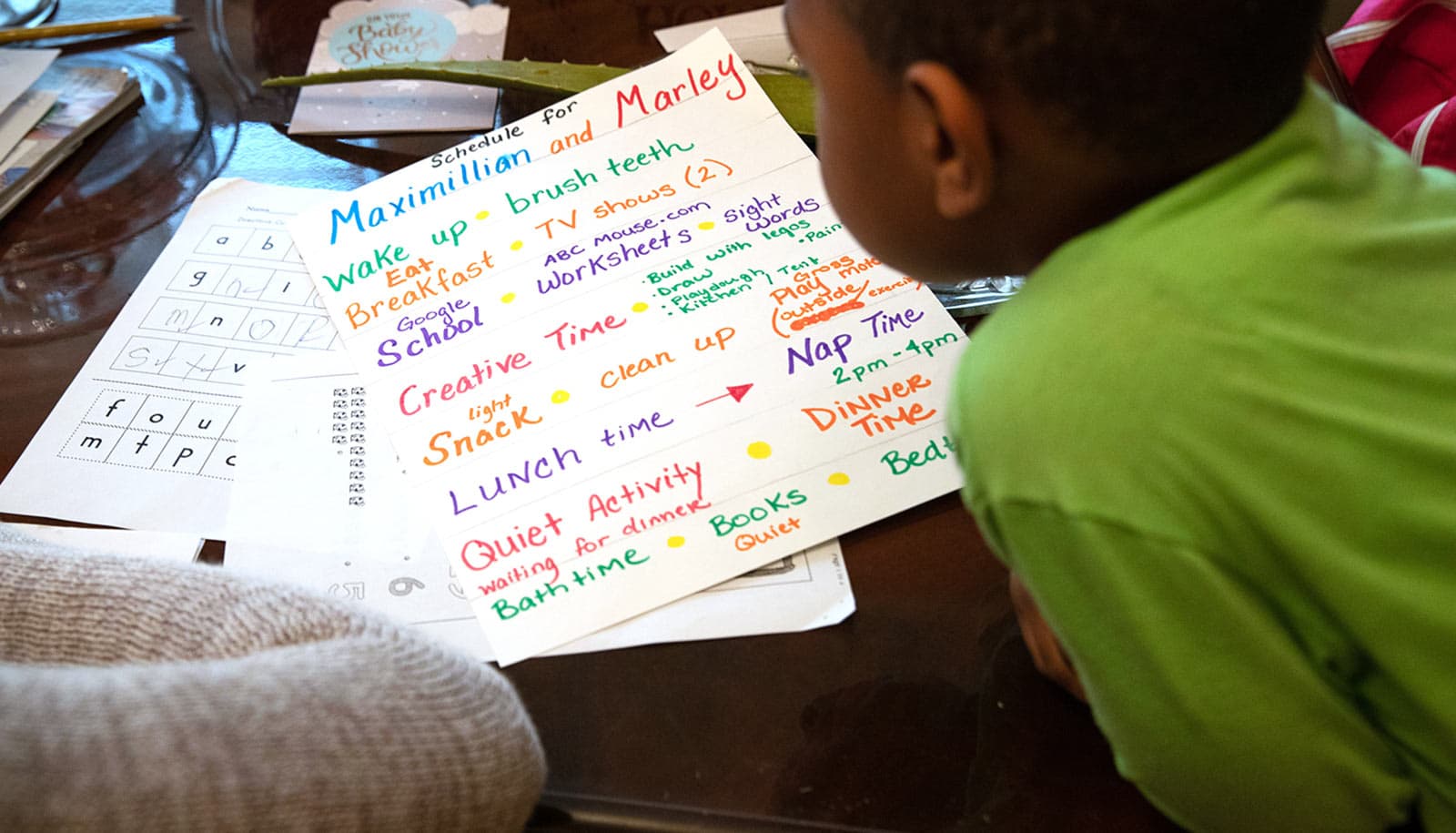Returning to school in person after a year’s worth of pandemic-induced absence is sure to spark a range of challenges and stresses for students, teachers, and parents.
Leaving the safety of Zoom and being among masked-up peers and others, along with the stimuli that accompanies being in public for the first time in a year in a classroom setting, will affect everyone differently.
Jennifer Ruef and Sarah Stapleton, both from the College of Education at the University of Oregon, have advice for parents and teachers to help address some of those concerns, how to approach the coming summer, and what opportunities on how to do things better may have emerged over the past year:
1. Don’t worry about ‘learning loss’
One of the biggest concerns you hear about is the idea of “learning loss”—that kids will have forgotten much of what they’ve learned over the past year or backtracked during remote learning.
Ruef says not to worry. “Learning loss is a misleading term, and likely to cause anxiety,” says Ruef, an assistant professor who teaches best practices for learning and making sense of math.
“As humans, we are constantly learning,” she says. “The question is what were kids learning in this time of COVID? And then how can we leverage that? Kids are going to come back to schools with really varied experiences having been at home or away from school for about a year. What’s worth hanging on to? How can what kids bring into schools be part of where were picking up?”
People should plan for flexibility, she says.
“Look for every single way that a kid can show you that they are meeting the standards that you require for them to earn credit in your class. Find a way to keep those kids moving along.”
2. Have some patience
Everyone—students, teachers, parents—will have to go through a period of adjustment after being away from classmates and friends and the daily social interactions that come with that.
Patience is the key as everyone re-acclimates to being among people in real life again, Ruef says.
“I think just as adults are trying to figure out how to do that, we need to have some patience with how kids are going come back and reconnect with their peers and reconnect with teachers. I suspect that learning how to sit in classrooms and just be present, just paying attention to something that’s not a screen, may be a challenge for some of our teens.”
3. ‘Give yourself some grace’
The pandemic and its myriad effects have taken a toll on educators, students, and parents in different ways, and everyone needs to keep that in mind in the coming year.
“Parents: Give yourself some grace,” Ruef says. “We have all had a very challenging year. It was not your job to make sure that your kid had a truly excellent educational experience this year. Whatever you did, let it be enough.”
Teachers should be mindful of experiences students could be bringing with them into the classroom, such as the loss of a family member, or someone who was out of work or facing food insecurity.
“I think it’s important to acknowledge the challenges that kids have faced and then not simply define them in terms of that trauma but to consistently see kids as capable of brilliance and full of knowledge and assets that they can bring with them,” Ruef says.
4. Thank the teachers
Teachers, administrators, and support personnel have all been working double and triple time since last March, and one key step parents can do is to put their trust in them as in-person instruction resumes.
“Please find some way to thank your kid’s teachers.”
“Every teacher I know is working their heart out,” says Sarah Stapleton, an assistant professor in the education studies department. “They’re also frustrated because it’s impossible to feel like you’re serving everyone’s needs given the situation.”
After playing a larger role in their children’s education during the pandemic, parents shouldn’t completely step back once their kids return to school, Stapleton says. “Parents and schools should always be in partnership.”
Parents should see their children’s teachers as allies and resources for help during the transition back to the classroom, Ruef says.
“Please find some way to thank your kid’s teachers. I don’t know if it’s possible to express enough gratitude for what they’re doing.”
5. Take advantage of hands-on learning opportunities
In some cases, some subjects, such as science, were marginalized during the pandemic because of the challenges brought along by remote teaching and the hurdles to hands-on learning opportunities. And if there was ever a time that showed how important understanding science is, it was the past year, the researchers say.
Ruef and Stapleton says there are numerous ways to keep kids engaged in learning without even trying. “We live in a beautiful place, so go hiking and just take them outside,” Stapleton says.
She recommended using several available apps, such as Seek and Merlin, that can help users identify plants and birds respectively.
Household tasks like cooking, gardening, or shopping offer other ways to include math problems into your daily routine, Ruef says.
6. Learn from online schooling
Changes implemented during the pandemic also illustrate valuable lessons that can be applied going forward.
“Zoom and other digital tools have given us a lot of options to do things online if we need to,” Stapleton says. “As an instructor, I feel like I have an expanded toolbox of instructional strategies I can use when we go back to in-person teaching.”
“If it’s distance or illness or whatever it is that is keeping you from being physically present, there are now ways to include people in a meaningful way,” Ruef adds.
After seeing how some kids thrived in an online environment, keeping an online component might be something schools will want to look at more closely, Stapleton says. She also sees the pandemic as an opportunity to reexamine teaching environments.
“If we had better outdoor education infrastructure in our schools, we could have perhaps returned sooner and in safer ways or in ways that make families feel better,” Stapleton says.
7. Value food service workers
One major need that came to light during the pandemic was the critical role school food programs play. Stapleton, whose research focuses on food-related issues, says food program employees and volunteers stepped up once schools shut down and found ways to still fill this critical need for many families.
As a result, schools redesigned many programs, partnering with nonprofits and others, to get food into the hands of families and students who were no longer gathering in a central location for school.
“This whole experience can really help us appreciate the essentialness of school food,” Stapleton says. “Let the food service workers know that they are appreciated. They’ve all been working ceaselessly throughout impossible situations.”
8. Take a break before returning to school
With a year like everyone has had, once the school year is done, people should feel guilt-free in taking some down time and resist the compulsion to play catch-up over the summer.
“Turn the computer off for a long period of time—days, even weeks,” Stapleton says. “Just take a break.”
“Prioritize the break,” Ruef adds. “Because teachers and kids will be more resilient if they are more whole. Teachers are going to be more effective if their batteries are recharged. If you come in strong and ready to go, you’re just much better off and everybody’s going to have a better experience.”
Source: Jim Murez for University of Oregon



